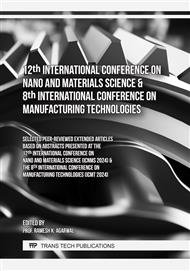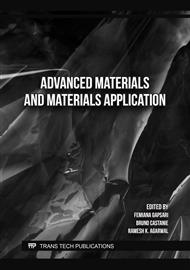p.3
p.11
p.21
p.27
p.35
p.43
p.53
p.59
Friction Stir Welding between Marine Grade Aa 5083 and HSLA Steel
Abstract:
The revolutionary method of solid-state joining technique has already attracted significant attention of advance welding and joining research community. The technique has been continuously developing for many alloy systems for similar and dissimilar joints. Recent research in these areas aiming to join complex dissimilar alloy pairs, composite, polymers, ceramics etc. This paper presents a study of friction stir welding between marine-grade aluminum alloy AA 5083 and HSLA steel, configured in a butt arrangement. The study investigates the evolution of Fe-Al series of intermetallic layer formation at the joint interface and its effective management to yield best joint efficiency. The FSW in the said alloy pairs yielded an 83.25% welding efficiency based on the aluminum alloy side strength. XRD analysis along with SEM examination revealed the formation of Al13Fe4 and Al5Fe2 as intermetallic compounds which was confirmed by the EBSD analysis. The obtained results are discussed in the paper considering the effect of the weld joint performance.
Info:
Periodical:
Pages:
21-26
Citation:
Online since:
May 2024
Authors:
Price:
Сopyright:
© 2024 Trans Tech Publications Ltd. All Rights Reserved
Share:
Citation:



